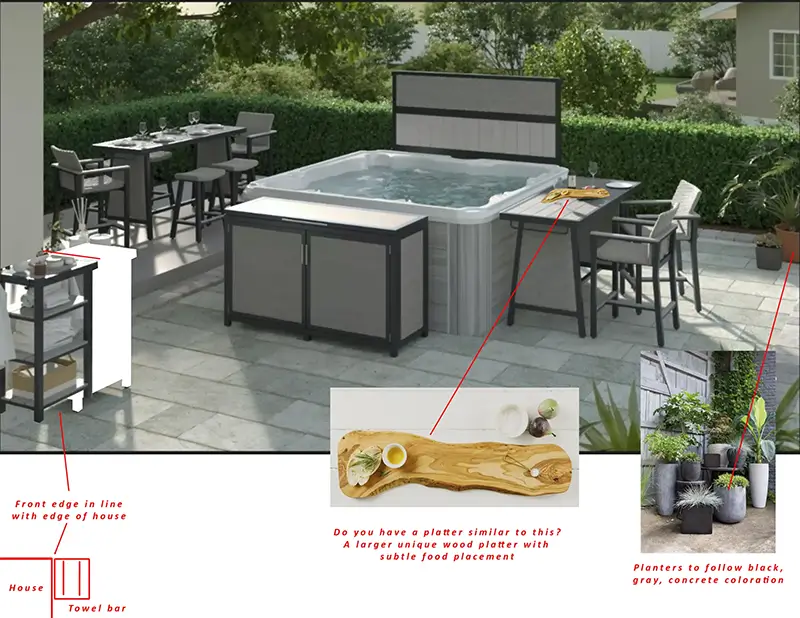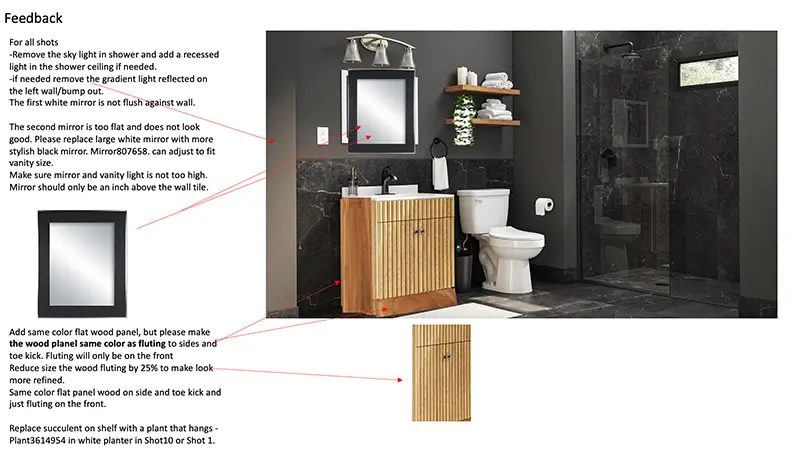Revision Policy
Revision Policy
Turnaround Time For Feedback & Approval
Once the project or milestone is delivered, the customer is expected to provide feedback or approval within 4 business days
- Revisions requested after 4 business days will still be processed, but likely to cause a delay in the overall turnaround time of the project.
- The 4 business day approval time can be extended or reduced by agreeing on the required time as a service level agreement at the start of the project. For example, at the start of the project the customer can request for 1 business day as the time required to provide approvals or feedback on any milestone delivery, so the project can be completed earlier.
Best Practices For Providing Feedback
- Customers are encouraged to provide feedback with as much visual references as possible in order to ensure efficient processing. Examples below: (We need to provide screenshots or examples feedback that we have received from our customers that are ideal and aid the producers to action the feedback effectively)
- Customers are expected to clearly highlight the areas needing attention and provide detailed instructions with visual references. Any information that helps us meet the customer’s expectations is greatly appreciated.
Examples of Feedback documents :


Number Of Revisions
For each milestone deliverable, the number of revisions will be limited to one.
- Once the draft submission is done, the client must provide comprehensive feedback. In order to efficiently deliver the project with quick turnarounds, we expect all the feedback to be collected and provided in one go. Any feedback received after the final submission that could have been addressed after the initial submissions will be considered a scope change and will incur an additional fee.
Free Revisions
- Non-compliance with Directions: Revisions due to our failure to follow the explicit directions and inputs provided by the customer as part of the inputs collection process.
- Color Matching: Adjustments to match the color based on carefully provided directions or references.
- Note: Color matching means aligning the image color to the actual product color, not recoloring/texturing.
- Reflections on Shiny Products: Adjustments to reflections on shiny products if the final images do not match the provided examples.
- Severe Errors:
- Product shape or texture or size does not match the actual reference provided by the customer
- Angle from which the product has been shot does not match the reference or inputs provided by the customer
- Minor Adjustments:
- Decreasing the image size or paddings.
- Adjusting the size, intensity, or color of shadows.
- Adding sharpness to images.
- Minor Prop placement changes.
- Alignment Issues: Fixing alignment issues where the product is not centred or straightened as specified.
- Lighting Corrections: Adjustments to lighting if the final image does not match the lighting style and intensity specified in the proposal.
- Removal of Artefacts: Removing any unwanted artefacts or spots that appear in the image.
- Cropping Adjustments: Modifications to cropping if the image is not cropped as specified in the original instructions.
- Background Color Adjustments: Correcting the background color if it does not match the specified or agreed-upon color.
- Logo and Branding Corrections: Ensuring logos or branding elements are accurately represented and positioned as per the inputs originally provided by the customer.
- Note: Applicability of free revisions
- White products on a white background may appear soft due to an optical illusion caused by the lack of contrast, but they maintain the same level of sharpness as other images.
- The above revisions will be free of charge only if the result does not match the provided inputs or information.
- If the deliverables are compared to new inputs that were not part of the original project inputs, they will be treated as paid revisions.
- The revision policy may differ based on the project requirements and will be decided upfront with both parties agreeing to the same.
Paid Revisions
Paid edits are charged based on the changes or requirements.
Changes After Project Completion
Any changes made to the project after the final deliverables have been sent. Common examples include: changing the angle, layout, or styling; adding a new angle; removing shadows; changing the background; increasing image size; adding props, etc.
Changes After Draft Submission
Any changes or additions in the inputs made to the project after the first draft has been submitted to the customer will be treated as scope change. Common examples include: changing the angle, layout, or styling; adding a new angle; removing shadows; changing the background; increasing image size; adding props, etc.
Inputs Provided After The Confirmation Phase
Our team has a comprehensive inputs process that includes a project kick-off call to summarise the inputs provided by the customer and confirm the same. Any inputs provided after the confirmation call / email that is likely to increase the overall efforts involved in completion of the project will be treated as a scope addition.
Re-Coloring / Re-Texturing
Any request to Re-color / Re-Texture the product after the product has been delivered or after the commencement of the project, based on new inputs or additional inputs.
Shape Changes
Changing the shape of the product after the commencement of the project which was not part of the initial Inputs / scope.
Examples Not Provided Initially
Revisions based on examples that haven’t been provided before beginning work on any feedback / iteration.
Foldings / Wrinkles On Soft Surface Products
If any input is provided to add wrinkles or folds to a product after completion or commencement of the project, this will be treated as a paid revision. The input for the same must be included in the initial input collection phase.
Reflections On Shiny Products
Changing reflections on shiny products if the final images match the examples provided